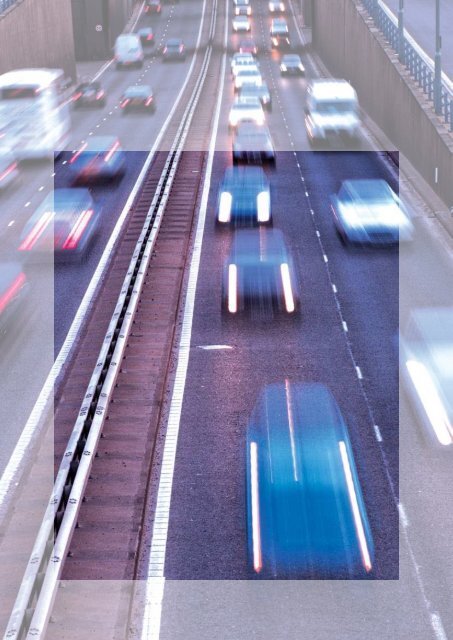Powering the Future Summary Report - Parsons Brinckerhoff
Powering the Future Summary Report - Parsons Brinckerhoff
Powering the Future Summary Report - Parsons Brinckerhoff
You also want an ePaper? Increase the reach of your titles
YUMPU automatically turns print PDFs into web optimized ePapers that Google loves.
<strong>Powering</strong> <strong>the</strong> <strong>Future</strong> <strong>Summary</strong> <strong>Report</strong><br />
<strong>Powering</strong> <strong>the</strong> <strong>Future</strong> <strong>Summary</strong> <strong>Report</strong><br />
UK energy consumption by sector<br />
1. Transport<br />
The transport sector consumes about 26% (59 MTOE)<br />
of <strong>the</strong> fossil fuel supply to <strong>the</strong> UK economy. Road<br />
transport dominates UK transport energy consumption<br />
and any transfer of traffic from road to rail will strongly<br />
affect energy consumption in <strong>the</strong> rail sector. Since<br />
rail represents a small proportion of passenger and<br />
freight movements, it would be radically affected by<br />
any significant transfers from road transport. Because<br />
of <strong>the</strong> modest scale of rail energy consumption and<br />
its sensitivity to road transport strategy, detailed<br />
consideration of this part of <strong>the</strong> transport sector is not<br />
attempted pending clearer definition of overall transport<br />
strategy.<br />
In order to reduce CO 2 emissions from road transport,<br />
<strong>the</strong> energy currently delivered from fossil petroleum<br />
fuels will have to be substantially replaced by<br />
alternatives.<br />
Table 1 illustrates <strong>the</strong> main options considered for <strong>the</strong><br />
transport sector and shows which ones are included in<br />
<strong>the</strong> reference scenario, <strong>the</strong> base case for evaluation of<br />
alternative options.<br />
We assessed measures to improve <strong>the</strong> performance<br />
of internal combustion engines. While <strong>the</strong>se would be<br />
useful transition measures, none can deliver <strong>the</strong> radical<br />
reductions in fuel consumption needed to meet <strong>the</strong><br />
2050 commitment.<br />
Figure 6 shows <strong>the</strong> overall CO 2 reduction effects of<br />
<strong>the</strong> options, including changes of emissions in <strong>the</strong><br />
electricity sector, where appropriate, compared to <strong>the</strong><br />
‘business as usual’ case. Electricity sector emissions<br />
are based on indicative levels of 0.4 tCO 2 /MWh in 2020<br />
and 0.1 tCO 2 /MWh in 2050.<br />
Table 1 Selected measures for transport sector response to CO 2 emissions<br />
13:14

















